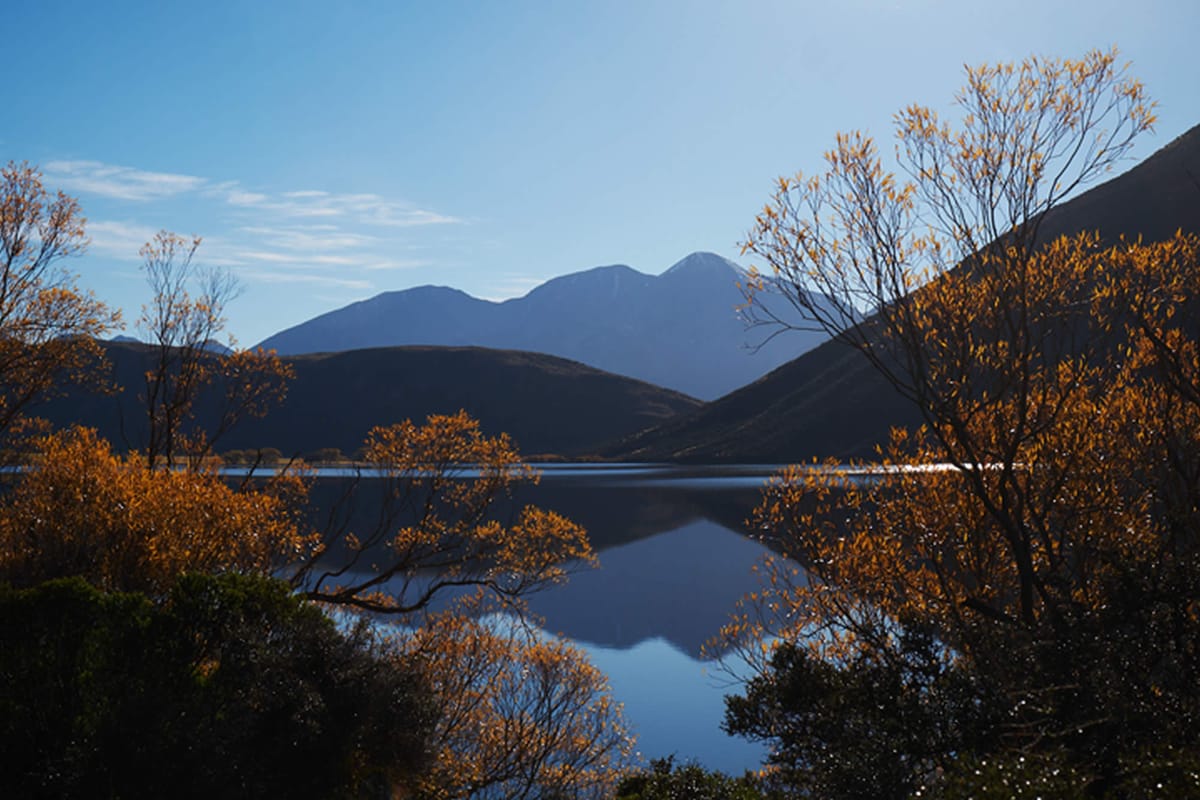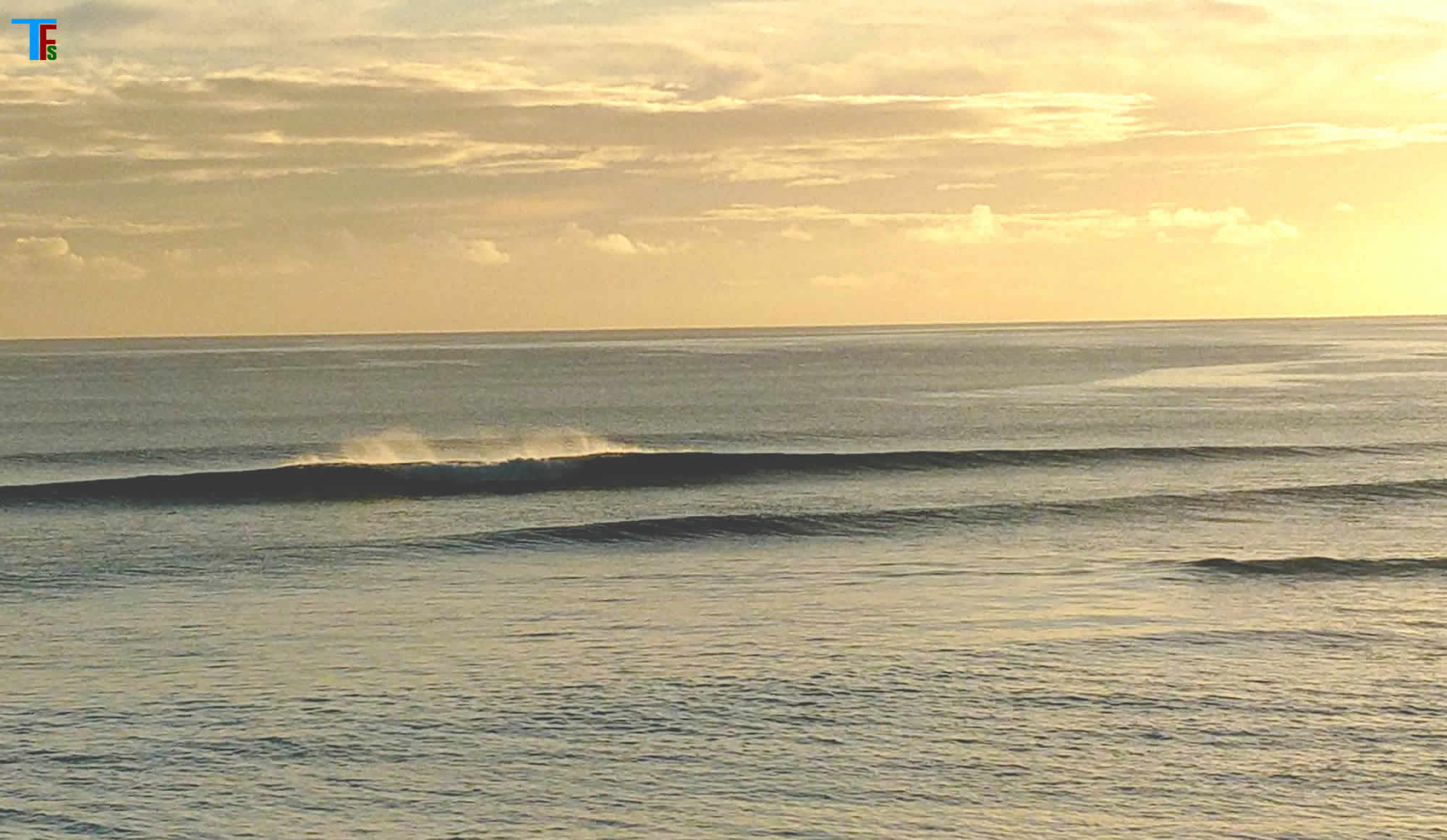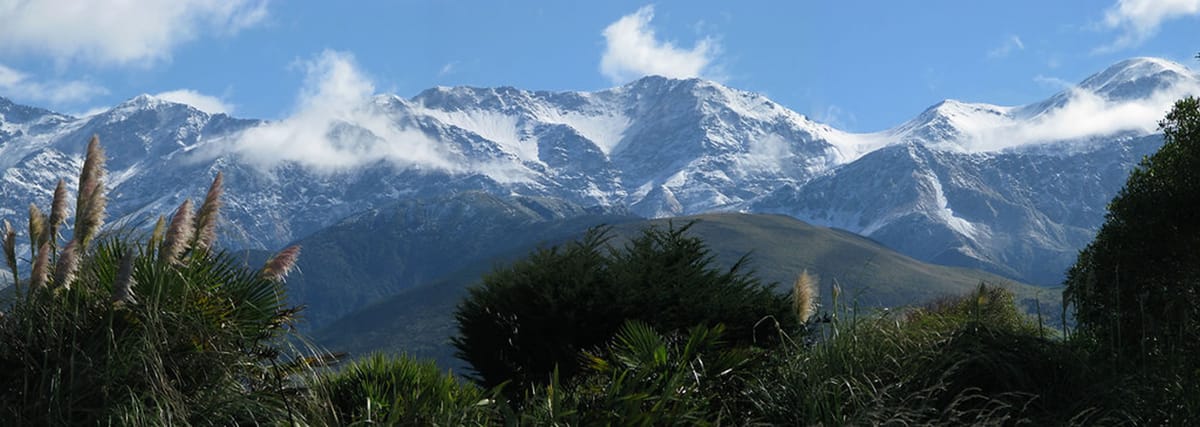The Fragile Sea Newsletter TFS #06
Can AI produce true creativity? We discuss music, art and creativity, why human creators have a strong future, and why we must assure that they do

Welcome!
The web version for mobile and desk is here
(- the references will pop up when selected - not available on the email version.
- note also, the email version does not include updates)
Welcome to the sixth Fragile Sea newsletter!
In this newsletter we look at one subject mash: music, creativity, and AI.
Quickreads

- AI, devtech, comms. Can AI produce true creativity? why human artists have a strong future.
- I wrap up in Things that go wow, briefly update the short-term future in What’s coming up, and finish with a Kokinshū poem.
- TFS#07 will be out Thursday, 25th April, at 8:00 pm, UTC.
Let's go!
AI, devtech, comms

Daily AI news – the source of this week’s focus on music and the creative arts
Increasingly, I find myself surfing AI news daily; the range of quality sources is truly mind-blowing, as is the rapid pace of development. With The Fragile Sea, I never set out to beat the best in AI news, it’s really the neurocognitive areas that interest me the most, as well as genuinely useful innovations, and connections that spark insights into the whole polymath of human knowledge and experience across multiple domains.
The sources for daily AI updates I visit most often are The Sequence, written by Jesus Rodriguez and Ksenia Se [1], Daily AI [2], and Science Daily Artificial Intelligence News [3]. Each has its own unique content approach, design, and emphases.
Music and AI
In this newsletter, a subject I've been avoiding for a long while – music making and AI, has finally ear-wormed me to the point where I can’t ignore it anymore.
The Sequence posted a great article on 7th April entitled ‘Generative Audio Models Just Had a Great Week’ [4]. Given that my first job was as an audio panel operator in a radio station, and I certified as an audio engineer in Sydney, I realised I hadn’t really caught up with where AI was going with sound.
The reason for hesitation is probably because of all the years of playing music and wanting to support real musicians, in a world of realities in that creative space, oftentimes a meagre existence for many artists.
Now, I could rattle on about how AI is generating attractive songs, and how amazing that is, but it doesn’t help my feelings for real musicians, and the difficulty many artists have in making a living from music.
We'll get to creativity in a bit; let's start with copyright. There’s no doubt in my mind that a copyright barrier is looming, in terms of AI, and data sources that are not authorised, or public domain. There seems to be other tensions also, that could be termed risks. I came across an article by Bruce Schneier and Nathan Sanders on factions in AI that was so unlike any other article I had read, that I still don't know where to place it. They are respected experts, and wrote of a “cacophony of coded language, contradictory views, and provocative policy demands”. It’s a colourful article, describing the interplay in AI between Doomsayers, Reformers, and Warriors [5]. I'm wondering if things have moved on, but it's a fascinating viewpoint.
In TFS#03 I discussed royalties and copyright, providing several sources on how broken the copyright system is. I asked why we can't fix it, and noted that Kobalt had engineered a paradigm change in gathering royalties for artists in the music industry, from over 900,000 separate revenue streams for a single song [6]. Other music industry initiatives also show it's possible to automate royalty collection [7]. Why can’t we fix this for AI, and for patenting and copyright in general?
Music and creativity
But it’s not only about AI and copyright, it's about finding a way to support artists, and valuing the human creative process. On April 2nd, the Guardian reported a letter signed by more than 200 artists asking tech firms to pledge not to develop AI tools to replace human creatives. The letter was signed by “A-list stars such as Billie Eilish, J Balvin, and Nicki Minaj, to Rock and Roll Hall of Famers like Stevie Wonder and REM. The estates of Frank Sinatra and Bob Marley are also signatories” [8].
Rationally one could say that they have their own economic interests at heart, no different to the pursuit of AI. So, why should we take heed? Well, how much do we value artists and the human creative process?
If I try to visualise a futuristic ‘five years from now looking back’ view, it makes me wonder if music preferences will favour AI-generated music in that future world, as it becomes more common. Will AI find neural pathways to ‘hits’, that sound better than human creativity? Will humans, I wonder, become ‘heritage’ acts, a sort of Star Wars bar scene? It doesn’t have a great feel to it; I’m not rocking that beat.
There are so many areas where AI is racing ahead, and as we see below, a form of creative ideation is one of them, quite amazing really, with a huge, bright future. It’s just that I think human artistic performance and creation are completely different domains to AI ideation.
Video and different ways of looking at creativity
In video, when Sora was released in draft, I was stunned by the visual feast, it was just so exciting, though nascent, but then I thought, should I feel guilty about being so amazed? We drink the coolaid, you know, ‘destruction is part of life’, ‘regeneration brings forth new things’, na, na-na, na, na, and so on. But Sora was really neat.
It seems like we can’t hide from whatever the future is going to bring, so I went back to look at the creative process from a different angle - neurocognition. I haven’t fully revisited this yet, but here are a few thoughts on the way. I’m hoping this might motivate other ways of thinking about what we might do with AI and the human creative arts.
This is a bit whacky, so please bear with me.
Creativity and technologies
Let’s start somewhere else:
- Video and photography require considerable technology. The creation may be conceptual rumination, but the expression and execution require multiple disciplines, devices, and expertise to achieve.
- Music creation is different – one person with a voice can create music, all the way to a full orchestra, accompanied by multiple skills, disciplines, and technologies, like synthesizers.
- Performance is part of that – again, one person can summon angels in a performance and lift a room to a higher place, in an act of creation.
- Performance art doesn’t require more than a performer to be an act of creation. The question is, do the lexical semantics around ‘innovation’ and ‘creativity’ require an audience, or an economic return, to be a creation?
The starting place, therefore, when assessing AI and creativity, is, I believe, not to assume all types of creativity and innovation are the same thing. Writing a song can be healing, spiritual communion, to slay demons, to thank, or tick someone off metaphorically, to reach out, a factory to make a lucrative hit, anything. But not always all of them together, and the reasons are all different. If it makes money, great, but it’s not so easy to make a hit. Timing, luck, right place, right time, all of that comes into play.
Paul McCartney and the rest of the Beatles, creating the song Get Back, on the fly, as shown memorably in Peter Jackson’s edited film version of ‘Get Back’, demonstrate an act of creation, summoning skill, talent, and God knows what else, from places no-one knows but them. And it’s not popularity or economic success that makes the act of human creation so powerful, and so wonderful.
Creativity and economic value
It seems to me that many of the papers and commentary on AI creativity are focused on economic value, driven by attracting humans to generate that return, for example, a prompt to provide ‘ten innovative ideas for a startup’. There’s alot right about that, it’s just not the whole story of what creation is.
The words ’creativity’ and ‘innovation’, when talking about AI, come with signifiers. One paper contends that ‘Creative AI’ should be called instead ‘Artificial Creativity’, and that it lacks ‘authenticity’, inherent in great human art [9].
In August 2023, Timothy Jaeger, writing on Medium, asked whether AI was the end of originality, and discussed rethinking creativity in the age of AI. I smiled when he credited co-authorship of the article to ChatGPT, Claude 2, and Bard LLMs (Large Language Machines) [10].
It’s a brilliant article, except that artistic creation and economic return appear to be one and the same. He prompts an LLM for innovative ideas, noting that “creativity devoid of strategy and execution is theoretical”. He believes machines will excel at ideation and humans should focus on “deploying taste, aesthetic sensibilities, psychological intuition and social awareness”. Seems to me that a few people might be standing around in that scenario, wondering what they should do. Or be. Or if it pays.
Creativity when economic value is secondary or meaningless
I think he’s right though, for specific purposes, such as executing ideas for startups. But what about one person sitting in a room with a guitar, coming up with something magical, where does that fit?
I dream in full-blown movies – plot, narrative, scene, lighting, actor blocking and marks, resolution, the whole shebang. Nothing scary. It comes to me as both making the movie and being in it, swapping between in dissolve. When I wake up, I think, that might make a good movie, but the storyline disappears within a few minutes, even as the joy can last for several hours. This is the truth, I can sometimes see flashes of scenes and colours in my mind late in the day, but not the storyline, it’s gone like Samuel Taylor Coleridge’s uninvited guest, causing Coleridge to lose much of the poem Kubla Khan [11].
That whole creative experience has enormous worth to me, and when it happens, not so often, I become aware only towards the end, and welcome it back, in my half sleep, with warmth and joy. It's a happy feeling.
When AI 'matches' human creativity
Jaeger references an article by Ethan Mollick published in August 2023, ‘Automating creativity’ [12] and taken together, they are really worth reading. Mollick references three fine papers that are also worth reading:
- ‘Ideas are Dimes a Dozen: Large Language Models for Idea Generation in Innovation’ [13]
- ‘Generative AI and Creative Problem Solving’ [14]
- ‘Generative artificial intelligence enhances creativity but reduces the diversity of novel content’[15]
Mollick’s three summaries from these papers encapsulate where AI can enable humans in ideation, and where AI is more limited than humans. Mollick also notes that GPT-4 has been shown to beat 91% of humans on one creativity test, and 99% of humans on another, called the Torrance Tests of Creative Thinking (TTCT) [16].
Around the same time, mid 2023, Science Daily reported new research from the University of Montana suggesting “artificial intelligence can match the top 1% of human thinkers on a standard test for creativity” [17], [18]. Good compendiums of creativity tests can be found in these two sources [19], [20].
Mollick suggests the data supports a view that, except for very creative people, AI LLMs can be creative idea enablers, whereby humans should focus on execution. Jaeger appears to support this view, in that humans should refocus on areas less able to be replicated by machines, such as “discernment, evaluation, interpersonal intelligence (etc)” [10].
There’s no doubt that LLMs can come up with some pretty compelling ideas, but humans undertaking non-ideation execution seems to me like a relegation. If I understand it right, let AI come up with the ideas, humans should then execute on them. That’ll work, but it seems also like a pretty early surrender of human creativity.
A paper published in Nature noted that “the present empirical data shows that AI can produce creative outputs that have reached at least the same level, and even higher, as the average of humans…these results suggest that the production of creative ideas may not be a feature only displayed in conscious human beings”[21]. The title includes a signifier, the ‘best’ humans (their title) ‘still outperform artificial intelligence in a creative divergent thinking task’. Isn’t that nice.
Comparing human and AI creativity
So, creativity has been semantically expressed as an all-in concept, not exclusively human. In a 2020 paper in Connection Science, Leonardo Arriagada sought to demystify the anthropocentric bias of artistic creativity, though I am not sure what he is saying in the abstract, even if the gist is apparent: “I intend to convince the reader that behind the denial of the creative artistic capacity to the machines, a negationist mysticism of the current scientific advances”[22]. It’s a great paper, Arriagada notes that it's not his goal to take issue with the mystical vision of art that many artists share: “I understand that it is a matter of faith and therefore, impossible to refute”. He is more interested in the values of aesthetics in algorithms, a unique take.
But still we compare, as though there’s no difference in semantics between human creation and AI creation. It’s interesting that we stack AI and humans against each other in tests; my contention in this newsletter is that creativity is not well defined when comparing humans and AI; we are lumping together the act of creation with uses, objectives, situational agendas, processes, performances, economics, and ideation. Maybe add algorithms to that. Seems like the act and the output are all one thing.
Creativity tests for humans appear to be useful in education and in industry, the TTCT is held to be the most prominent [23], but the suggestion is that more than one type of test is more accurate [24], [25]. Concerns remain with creativity tests [26], [27], [28], perhaps in similar ways to concerns with personality tests [29], [30], [31], [32], [33].
My sense is, if creativity tests are said to benefit and motivate students, how will we know when they are harmful to other students? That could be dangerous. Why one is using them is more important to flush out, I think.
In terms of the act of creation, these sorts of tests meld strategic, comparative, economic, usefulness, benefit, socialisation, and other factors in an unequal mash with no weights or signposts. It’s a bit hard to give one’s performance of a lifetime, when all these other bits are in the mix. It doesn’t seem like the mix will lift me or my audience to a higher place.
So, I think, perhaps, we should reverse up find the signpost again. But before leaving this road, here are three short tests (less than 3 mins ea) to gain some insight into whether one thinks creativity tests are worth it (at least that’s what I got out of them). The first one involves just looking at the screen. Best to do them off the bat without knowing much about them, but they are kind of cool [34], [35], [36], with one source that explains some of the science, if interested [37]. Go on, have some fun.
The neurobiology our creativity comes from
So let us now turn to art, performance, and creation from a slightly off-centre PoV. This might seem completely lateral, as though it doesn’t connect with any of the comments above, but please hold fire till the end.
Researchers have shown that an auditory stimulus takes only 8–10 ms to reach the brain, but a visual stimulus takes 20-40 ms [38]. A 2021 study found that even though the speed of light is faster than the speed of sound, we process sound in the brain faster. The researchers note that one of the tricks our brains undertake is to alter our sense of time to synchronize the joint perception of sound and vision [39], [40].
This recalibration depends on brain signals constantly adapting to our environment, to sample, order, and associate competing sensory inputs together [41], [42]. There are four suggested ways in which our brains achieve intersensory synchrony, however the underlying neural mechanisms are the subject of ongoing research [43].
With vision, while we know that the secondary visual cortex (V2), receives strong feedforward connections from the primary visual cortex (V1), and sends robust connections for further visual processing to areas V3 to V5 [44] [45], we also know that our brains mix sound and vision together. A 2006 study found, for the first time, that “single prefrontal neurons integrate communication information from the auditory and visual domains”, meaning, audio and vision are integrated at a stage of cognition [46].
In addition, MIT Researchers found that part of the brain dedicated to hearing is able to respond to visual stimuli [47], and another paper found that there were direct structural connections between auditory and visual motion-selective regions in humans [48].
This seems to support recent work in brain plasticity and earlier work in compensatory adaptations between senses, for example, when one sense is damaged, another compensates [49], [50].
As much as it may seem impossible, the brain processes sight and sound in the same manner [51], [52], however, there is still much to discover in the way we perceive and learn, and how senses integrate together [53], [54], [55].
Audio, in and of itself, is a true wonder of nature. Many years ago, I wrote a paper on the organ of Corti - two tiny, stupendously complicated miracles of nature, that enable us to hear. They are nested inside the human (mammalian) cochlea on either side of our heads, just above and in from each ear, connected to the opposite hemispheric auditory cortex [56], [57] [58].
About the most fascinating source I have read on aural and visual neural pathways, is a US military document (public) on helmet-mounted displays and the sensory perceptions to be aware of, for example when parachuting at night with night-vision apparatus. It’s an extraordinary explanatory document, and delves far deeper than the subject matter might suggest, now also a book [59].
The dual crossover nature of neural pathways to human visual and auditory cortices is a truly wonderful fact of our human biology, even though the roles of different neural structures are not yet fully understood [60].
While the pathways cross hemispheres, in addition, the dual hemispheric nature of our neurobiology adds a further complexity to the overall architecture – see this paper ‘Split-Brain: What We Know Now and Why This is Important for Understanding Consciousness’ [61].
Why is this important?
The point is, while AI LLMs can now achieve visual and audio ‘creativity’, we should keep in mind firstly, that these outputs predict from past human creativity. In addition, LLMs neither produce, nor achieve, dual hemispheric cognition, nor do they connect vision and audio together into a coherent ‘understanding’ (yet), the way humans do. I contend that our dual neural architecture is the engine whence our creativity springs. Everything we have ever created, has come from this engine.
About two weeks ago, I came across the work of Alexander Durig, and today his book ‘Closer to Consciousness: The First Strong Theory of Consciousness’ arrived. I know little of his work yet, but I understand he has a theory concerning “the possibility of two brain hemispheres operating as two brains interacting with one another and aware of one another” [62]. This contention is present also in the work of Fredric Schiffer [63], Mark Kelly [64], Iain McGilchrist [65] and others, referenced elsewhere in this newsletter.
It seems likely that consciousness and thought are only possible through the internal capability we have of dialogue with ourselves, and from within that dual hemispheric structure, comes language, creativity, and ultimately, our social humanity (for example see ‘Split brain: divided perception but undivided consciousness’[66]). Perhaps Durig has posited this approach also, I am looking forward to his insights.
So, with different architectures, are current AI creative outputs sufficient to be labelled ‘original’, and ‘as creative as humans?’ Certainly, we can be convinced that the output sounds original, but, in a copyright sense, the meanings of the words ‘derivative’ and ‘original’, will need to be redefined. Even the word ‘art’ may be in contention.
Artists of the world... Unite!
Given the current state of play, it's not far of a stretch to consider that AI systems operators, prompt engineers, and others, may become known as artists, and make a living out of the way they use AI to ‘create’ works of ‘art’. When synthesizers first came out, they were both lauded for their cool new sounds, and reviled by traditionalists; is this the same thing?
It will only matter if we think it does; I think it should. Musicians use technologies, the argument may go, what's the difference between a data warehouse technology and a synthesizer? Well, one doesnt 'play' a data warehouse, for one.
The great debate is not only about the livelihoods of human artists, though is it that, but whether we want to preserve the wonder of 'pure' creation produced by humans, from a brain structure that is a long way from being replicated in silicon.
One counter argument is that all creativity is derivative. Well, maybe, but even so, our neurobiology is unique, and LLMs didn’t create us.
But does it really matter? Look at it this way: will humans become ‘heritage’ performers in a travelling roadshow, a Star Wars bar scene, where AI creates more popular outputs? Will we end up as idea executors and facilitators, with AI the source of new ideas?
For now, as Mollick contends “there is more underlying similarity in the ideas that the current generation of AIs produce than among ideas generated by a large number of humans” [12]. That may stand for now, but even so, it also says nothing about aspects of creativity beyond just ideas – like performance creation, where an artist takes us to places we've never been before. It’s the shared experience of creation that is missing.
Maybe AI will achieve a different type of consciousness and creativity, but it won’t be human. While we may not be able to spot the difference in music creation, the difference may end up defining a pathway to managing AI: whatever it is, it’s not using the same architecture whence our creativity is born, flourishes, and replenishes.
AI futurists may say, who cares? it sounds great. Well, OK, but I don’t think seduction through iteration will last. The love affair has limits; we just haven’t grown tired of it yet. True sources of human creativity bring whole worlds into play, memories, lights, our unexplainable links to spirituality, the spirits of ancients, and as punters, we share the experience of creation with artists as they join their lights together in unique ways, and as they feedback the energy they receive from punters.
The human wellspring of creativity
Considering AI to be as creative as Handel’s Messiah, or, pick your favourite art form example and insert it here, is a misnomer; whatever AI is, the hits come from our sandpit, our walled garden, our past lore, a static partial history, tied down and limited by copyright, dataset availability, and date cutoff.
Also, by limitations in real-time processing, when compared to the superior way our brains continuously micro-predict the world and create constructs, from 'populations' of similar past experiences, and from snippets, both recent, and distant past history. (See [67], [68] for good discussions around these subjects). AI can't do that, so why do we persist in semantically defining human and AI creativity as the same thing?
But our weariness won’t arrive soon – the creative ideation already shown by some LLMs is truly amazing. It’s like the available history of human endeavour can now be made immediately present – something humans just can’t do.
There are more surprises coming, no doubt, but we shouldn’t throw in the towel and let AI ideate humans into just an execution role. Protect human artists, appreciate what they do, and make sure they can make a living out of it. And define our meanings on different types of creativity; it will be important in law.
When an AI achieves a dual hemispheric, real-time processing architecture, with plasticity, and deep recall, like humans, I would be disappointed if it didn’t produce true creativity in the human sense.
I expect there will be a time when AI does get there; it may be closer than we think, but the limitations are not only legal and data related. As noted, processing power to achieve real-time processing is still a significant hardware limitation. The true degree of freedom whence AI has now arisen again from multiple AI winters, is software. I don't believe coding and and algorithms will ever be a constraint - our coding and mathematical artists (for that is what they are) find ways around.
Some people, of course, have quite different views, which I heartily welcome [10], [12] [9], [69], [70].
Let artists be artists
For now, it's probably best that there is a distinction between human creativity and AI ideation. One or the other might be better or more lucrative in different situations and scenarios, and one might spark the other so that they both end up working well together, or not at all.
It’s the experience of creation that matters, which is why I think 200+ artists signing the letter mentioned at the start of this newsletter, are right. At least, define human performance and creation as fundamentally different to AI ideation, and fix the copyright and royalty mechanisms accordingly. In TFS#03, I suggested a framework to pay attributed royalties that could solve these issues. I need to elaborate on that at some stage.
In the targeted areas where AI is clearly superior, there are amazing developments and rapid progress being reported, virtually daily. As an assistive tool, better than humans in areas of intentional focus, the benefits are plain to see – the AlphaFold Protein Database and outputs are but one example, and a glimpse of its next generation, even more so [71], [72].
And execution is not a bad place to work - there’s a future of careers and breakthroughs in managing AI ideation – bring it on! and turn it into economic gold! But I suggest that we don’t conflate AI creativity with true human artistic creation; AI is not ready yet to stroll to the bar after a gig, order a drink, and chat with punters.
One final additional futuristic question: some people push through others to get to the bar, others look for respect from some locale of justification, still others are mindful, sensitive, confident, mannered, or just don’t give a ____.
Within the whole panoply of human behaviour, how will AI stars walk among us? Do we want them to?
I prefer my human artists, in all their (and our) flawed beauty. That’s what makes them special.
Things that go wow

Thanks for reading. I trust the discussion above has provided food for thought on useful pathways and motivations to further actions we can take.
What’s coming up

I have to say that I am enjoying ‘Applied Artificial Intelligence: A Handbook For Business Leaders’ by Mariya Yao and Kate Koidan (released Feb 12th 2024) [73]. In terms of practical guidance, it’s a super read.
In the next newsletter, we will look at the world wider than AI, reverting to the normal bi-weekly newsletter format. TFS#07 will be out Thursday, 25th April, at 8:00pm, UTC.
Its free to subscribe here.
Thanks for reading. I hope you can join me again, till then, take care,
Brent
Does the warbler’s
Song so charmingly
Ring out that
Later, ever fondly
Will he be remembered?
UDA-IN UTA’AWASE 8 [74]
Bye for now

Room 5000 - a short story I wrote in 1981 about a computer becoming sentient
TFS#09 - What do Neoliberalism, Friederich Hayek, markets, algorithms, AI, and creativity have in common? We delve into these subjects for more connections
TFS#08 - What are the correlations between growth, debt, inflation, and interest rates? In this business edition of The Fragile Sea, we go hunting in corporate, institutional, and academic papers for insights in the face of heightened political, economic, corporate, and environmental risks, and more besides!
TFS#07 - We discuss a mixing pot of subjects - the state of AI, will there be food shortages this summer? good things and not so in energy, pandemics - are we ready? some remarkable discoveries, and more!
TFS#06 - Can AI produce true creativity? We discuss music, art and creativity, why human creators have a strong future, and why we must assure that they do
TFS#05 - Practical guides for implementing AI, in other news, a revisit on CRISPR, and events in spaceweather, fake publishing, spring blossoms, and more!
TFS#04 - Has Artificial General Intelligence (AGI) arrived already? We look at the goings on in AI over the past four months
TFS#03 - AGI and machine sentience, copyright, developments in biotech, space weather, and much more
TFS#02 - Sam Altman's $7trn request for investment in AI, economic outlooks, and happenings in biotech, robotics, psychology, and philosophy.
TFS#01 - Economic outlooks, and happenings in AI, social media, biotech, robotics, psychology, and philosophy.
AI Connections Series



[1]: J. Rodriguez, ‘About - TheSequence’, 2024. https://thesequence.substack.com/about
[2]: DailyAI, ‘Daily AI’, DailyAI, 2024. https://dailyai.com/about/
[3]: ScienceDaily, ‘Artificial Intelligence News’, ScienceDaily, 2024. https://www.sciencedaily.com/news/computers_math/artificial_intelligence/
[4]: The Sequence, ‘Generative Audio Models Just Had a Great Week’, Apr. 07, 2024. https://substack.com/inbox
[5]: B. Schneier and N. Sanders, ‘Opinion | The A.I. Wars Have Three Factions, and They All Crave Power’, The New York Times, Sep. 28, 2023. https://www.nytimes.com/2023/09/28/opinion/ai-safety-ethics-effective.html.
[6]: K. Gray, ‘Kobalt changed the rules of the music industry using data – and saved it’, Wired UK, May 01, 2015. https://www.wired.co.uk/article/kobalt-how-data-saved-music.
[7]: E. Elshan, C. Engel, and P. Ebel, ‘Opening the Black Box of Music Royalties with the Help of Hybrid Intelligence’, Jan. 2021. https://www.doi.org/10/gtj82z
[8]: N. Robins-Early, ‘Billie Eilish, Nicki Minaj, Stevie Wonder and more musicians demand protection against AI’, The Guardian, Apr. 02, 2024. https://www.theguardian.com/technology/2024/apr/02/musicians-demand-protection-against-ai.
[9]: M. Runco, ‘AI Can Only Produce Artificial Creativity’, Journal of Creativity, vol. 33, p. 100063, Aug. 2023, https://www.doi.org/10/gtqhsc
[10]: T. Jaeger, ‘The End of Originality?’, Medium, Aug. 31, 2023. https://medium.com/@timj/the-end-of-originality-1651860429a9
[11]: Wikipedia, ‘Kubla Khan’, Wikipedia. Mar. 04, 2024. https://en.wikipedia.org/w/index.php?title=Kubla_Khan&oldid=1211875537.
[12]: E. Mollick, ‘Automating creativity’, Sep. 16, 2023. https://www.oneusefulthing.org/p/automating-creativity?utm_medium=ios
[13]: K. Girotra, L. Meincke, C. Terwiesch, and K. T. Ulrich, ‘Ideas are Dimes a Dozen: Large Language Models for Idea Generation in Innovation.’ Rochester, NY, Jul. 10, 2023. https://www.doi.org/10.2139/ssrn.4526071
[14]: L. Boussioux, J. N. Lane, M. Zhang, V. Jacimovic, and K. R. Lakhani, ‘Generative AI and Creative Problem Solving.’ Rochester, NY, Mar. 01, 2024. https://www.doi.org/10.2139/ssrn.4533642
[15]: A. R. Doshi and O. Hauser, ‘Generative artificial intelligence enhances creativity but reduces the diversity of novel content.’ Rochester, NY, Aug. 08, 2023. https://www.doi.org/10.2139/ssrn.4535536
[16]: Wikipedia, ‘Torrance Tests of Creative Thinking’, Wikipedia. Mar. 09, 2024. https://en.wikipedia.org/w/index.php?title=Torrance_Tests_of_Creative_Thinking&oldid=1212815134.
[17]: ScienceDaily, ‘AI tests into top 1% for original creative thinking’, ScienceDaily, Jul. 05, 2023. https://www.sciencedaily.com/releases/2023/07/230705154051.htm
[18]: C. Shimek, ‘UM Research: AI Tests Into Top 1% for Original Creative Thinking’, Jul. 05, 2023. https://www.umt.edu/news/2023/07/070523test.php
[19]: B. Cramond, ‘Choosing a creativity assessment’, 1999, https://cms.learningthroughplay.com/media/ynrbfpi4/appendix_assessingcreativity_pdf.pdf.
[20]: Linkedn, ‘What are the most popular creativity assessment tools?’, 2024. https://www.linkedin.com/advice/0/what-most-popular-creativity-assessment-tools-amloc
[21]: M. Koivisto and S. Grassini, ‘Best humans still outperform artificial intelligence in a creative divergent thinking task’, Sci Rep, vol. 13, no. 1, p. 13601, Sep. 2023, https://www.doi.org/10/gss8b2
[22]: L. Arriagada, ‘CG-Art: demystifying the anthropocentric bias of artistic creativity’, Connection Science, vol. 32, no. 4, pp. 398–405, Oct. 2020, https://www.doi.org/10/gmm85r
[23]: A. M. A. Alabbasi, S. H. Paek, D. Kim, and B. Cramond, ‘What do educators need to know about the Torrance Tests of Creative Thinking: A comprehensive review’, Front. Psychol., vol. 13, Oct. 2022, https://www.doi.org/10/gtqkk7
[24]: C.-L. Wu, S.-Y. Huang, P.-Z. Chen, and H.-C. Chen, ‘A Systematic Review of Creativity-Related Studies Applying the Remote Associates Test From 2000 to 2019’, Front. Psychol., vol. 11, Oct. 2020, https://www.doi.org/10/fnf8
[25]: S. Said-Metwaly, W. V. D. Noortgate, and E. Kyndt, ‘Methodological Issues in Measuring Creativity: A Systematic Literature Review’, Creativity. Theories – Research - Applications, vol. 4, no. 2, pp. 276–301, Dec. 2017, https://www.doi.org/10/gj342q
[26]: H. Long, B. A. Kerr, T. E. Emler, and M. Birdnow, ‘A Critical Review of Assessments of Creativity in Education’, Review of Research in Education, vol. 46, no. 1, pp. 288–323, Mar. 2022, https://www.doi.org/10/jjrn
[27]: Z. Kim, ‘Can We Trust Creativity Tests? A Review of the Torrance Tests of Creative Thinking (TTCT)’, Creativity Research Journal - CREATIVITY RES J, vol. 18, pp. 3–14, Jan. 2006, https://www.doi.org/10/dzfzx3
[28]: K. H. Kim, ‘The Creativity Crisis: The Decrease in Creative Thinking Scores on the Torrance Tests of Creative Thinking’, Creativity Research Journal, vol. 23, no. 4, pp. 285–295, Oct. 2011, https://www.doi.org/10/dqc7z8
[29]: M. Timms, ‘Why Personality Assessments Do More Harm Than Good’, Michael Timms, Dec. 05, 2018. https://michaeltimms.com/personality-assessments-harm/
[30]: Peatworks, ‘The Problems with Personality Tests’, Peatworks, 2024. https://www.peatworks.org/ai-disability-inclusion-toolkit/the-problems-with-personality-tests/
[31]: A. Chen, ‘How Accurate Are Personality Tests?’, Scientific American, Jan. 01, 2019. https://www.scientificamerican.com/article/how-accurate-are-personality-tests/
[32]: L. W. Macabasco, ‘‘They become dangerous tools’: the dark side of personality tests’, The Guardian, Mar. 04, 2021. https://www.theguardian.com/tv-and-radio/2021/mar/03/they-become-dangerous-tools-the-dark-side-of-personality-tests.
[33]: om Geraghty, ‘Critique of Personality Profiling (Myers-Briggs, DISC, Predictive Index, Tilt, etc) | Tom Geraghty’, May 10, 2021. https://tomgeraghty.co.uk/index.php/the-fallacy-of-applying-complicated-models-to-complex-problems-aka-why-personality-profiling-is-bs/
[34]: C. J. Bonk, ‘Creativity Tests’, Sep. 09, 2017. https://curtbonk.com/bobweb/r546/modules/creativity/creativity_tests.html
[35]: DAT, ‘Divergent Association Task: Fast creativity test’, 2024. https://www.datcreativity.com/
[36]: B. Uzzi, ‘How Creative Are You?’, Feb. 13, 2018. https://www.kellogg.northwestern.edu/faculty/uzzi/ftp/page176.html
[37]: J. Stillman, ‘A Harvard Researcher Invented a Fun 4-Minute Test That Can Tell You How Creative You Are’, Inc.com, Nov. 07, 2022. https://www.inc.com/jessica-stillman/harvard-researcher-creative-test-dat.html
[38]: A. Jain, R. Bansal, A. Kumar, and K. D. Singh, ‘A comparative study of visual and auditory reaction times on the basis of gender and physical activity levels of medical first year students’, International Journal of Applied and Basic Medical Research, vol. 5, no. 2, p. 124, Aug. 2015, https://www.doi.org/10/gh93w3
[39]: APA, ‘How our brain makes sense of a noisy world, with Nina Kraus, PhD’, https://www.apa.org, 2022. https://www.apa.org/news/podcasts/speaking-of-psychology/noisy-world
[40]: T. Lennert, S. Samiee, and S. Baillet, ‘Coupled oscillations enable rapid temporal recalibration to audiovisual asynchrony’, Commun Biol, vol. 4, no. 1, pp. 1–12, May 2021, https://www.doi.org/10/gj3dxp
[41]: ScienceDaily, ‘Study shows how our brains sync hearing with vision’, ScienceDaily, May 11, 2021. https://www.sciencedaily.com/releases/2021/05/210511081149.htm
[42]: The Neuro, ‘Study shows how our brains sync hearing with vision’, The Neuro, May 11, 2021. https://www.mcgill.ca/neuro/channels/news/study-shows-how-our-brains-sync-hearing-vision-330950
[43]: M. Keetels and J. Vroomen, ‘Perception of Synchrony between the Senses’, in The Neural Bases of Multisensory Processes, M. M. Murray and M. T. Wallace, Eds. Boca Raton (FL): CRC Press/Taylor & Francis, 2012. http://www.ncbi.nlm.nih.gov/books/NBK92837/.
[44]: Wikipedia, ‘Visual system’, Wikipedia. Mar. 26, 2024. https://en.wikipedia.org/w/index.php?title=Visual_system&oldid=1215680111.
[45]: Wikipedia, ‘Visual cortex’, Wikipedia. Feb. 07, 2024. https://en.wikipedia.org/w/index.php?title=Visual_cortex&oldid=1204626797.
[46]: T. Sugihara, M. D. Diltz, B. B. Averbeck, and L. M. Romanski, ‘Integration of Auditory and Visual Communication Information in the Primate Ventrolateral Prefrontal Cortex’, J Neurosci, vol. 26, no. 43, pp. 11138–11147, Oct. 2006, https://www.doi.org/10/fsn55w
[47]: MIT News, ‘MIT researcher finds that part of brain used for hearing can learn to see’, MIT News | Massachusetts Institute of Technology, Apr. 19, 2000. https://news.mit.edu/2000/brain
[48]: A. Gurtubay-Antolin et al., ‘Direct Structural Connections between Auditory and Visual Motion-Selective Regions in Humans’, J. Neurosci., vol. 41, no. 11, pp. 2393–2405, Mar. 2021, https://www.doi.org/10/gk3fpf
[49]: L. Lazzouni and F. Lepore, ‘Compensatory plasticity: time matters’, Front Hum Neurosci, vol. 8, p. 340, Jun. 2014, https://www.doi.org/10/gmwd25
[50]: R. H. Day and G. Singer, ‘Sensory adaptation and behavioral compensation with spatially transformed vision and hearing.’, Psychological Bulletin, vol. 67, no. 5, pp. 307–322, 1967, https://www.doi.org/10/dn4kpw
[51]: ScienceDaily, ‘Brain processes sight and sound in same manner’, ScienceDaily, Apr. 18, 2018. https://www.sciencedaily.com/releases/2018/04/180418144725.htm
[52]: Georgetown University Medical Center, ‘Making Sense of Senses: Researchers Find the Brain Processes Sight and Sound in the Same Two-Step Manner’, Georgetown University Medical Center, Apr. 10, 2018. https://live-guwordpress-gumc.pantheonsite.io/news-release/making-sense-of-senses/
[53]: APS, ‘Brain Reconciles Sight and Sound in Different Ways’, APS Observer, vol. 29, Apr. 2016, https://www.psychologicalscience.org/observer/brain-appears-to-have-different-mechanisms-for-reconciling-sight-and-sound.
[54]: M. Hamilton, ‘Is Hearing Affected by Vision?’, The Hearing Review, Dec. 06, 2023. https://hearingreview.com/inside-hearing/research/is-hearing-affected-by-vision
[55]: V. Tabry, R. J. Zatorre, and P. Voss, ‘The influence of vision on sound localization abilities in both the horizontal and vertical planes’, Front Psychol, vol. 4, p. 932, Dec. 2013, https://www.doi.org/10/gbfpc5
[56]: H. J. White, M. Helwany, A. R. Biknevicius, and D. C. Peterson, ‘Anatomy, Head and Neck, Ear Organ of Corti’, in StatPearls, Treasure Island (FL): StatPearls Publishing, 2024. http://www.ncbi.nlm.nih.gov/books/NBK538335/.
[57]: Wikipedia, ‘Organ of Corti’, Wikipedia. Oct. 26, 2023. https://en.wikipedia.org/w/index.php?title=Organ_of_Corti&oldid=1181949314.
[58]: Wikipedia, ‘Auditory cortex’, Wikipedia. Apr. 06, 2024. https://en.wikipedia.org/w/index.php?title=Auditory_cortex&oldid=1217570220.
[59]: C. E. Rash, M. B. Russo, T. R. Letowski, and E. T. Schmeisser, ‘Helmet-Mounted Displays: Sensation, Perception and Cognition Issues: (614362011-001)’, 2009. https://apps.dtic.mil/sti/citations/ADA522022
[60]: J. K. Bizley and Y. E. Cohen, ‘The what, where and how of auditory-object perception’, Nat Rev Neurosci, vol. 14, no. 10, pp. 693–707, Oct. 2013, https://www.doi.org/10/f5b5hr
[61]: E. de Haan et al., ‘Split-Brain: What We Know Now and Why This is Important for Understanding Consciousness’, Neuropsychology Review, vol. 30, Jun. 2020, https://www.doi.org/10/gm2n2b
[62]: A. Durig, Closer to Consciousness: The First Strong Theory of Consciousness. Authorhouse, 2023.
[63]: F. Schiffer, ‘A Dual Mind Approach to Understanding the Conscious Self and Its Treatment’, NeuroSci, vol. 2, no. 2, Art. no. 2, Jun. 2021, https://www.doi.org/10/gkhkbk
[64]: M. Kelly and A. B. Barron, ‘The best of both worlds: Dual systems of reasoning in animals and AI’, Cognition, vol. 225, p. 105118, Aug. 2022, https://www.doi.org/10/gr7zvs
[65]: I. McGilchrist, The Divided Brain and the Search for Meaning. Yale University Press, 2012.
[66]: Y. Pinto et al., ‘Split brain: divided perception but undivided consciousness’, Brain, vol. 140, no. 5, pp. 1231–1237, May 2017, https://www.doi.org/10/f947x3
[67]: L. F. Barrett, How emotions are made: the secret life of the brain, First Mariner Books edition. Boston New York: Mariner Books, 2018.
[68]: L. F. Barrett, Seven and a Half Lessons About the Brain, Main Market edition. Picador, 2021.
[69]: Prof. A. Banafa, ‘Pushing the Boundaries: AI for Creativity and Open-Ended Tasks | LinkedIn’, Mar. 15, 2024. https://www.linkedin.com/pulse/pushing-boundaries-ai-creativity-open-ended-tasks-prof-ahmed-banafa-lunyf/
[70]: J. Haase and P. H. P. Hanel, ‘Artificial muses: Generative Artificial Intelligence Chatbots Have Risen to Human-Level Creativity.’ Mar. 21, 2023. https://www.doi.org/10.1016/j.yjoc.2023.100066
[71]: Google DeepMind, ‘A glimpse of the next generation of AlphaFold’, Google DeepMind, Oct. 31, 2023. https://deepmind.google/discover/blog/a-glimpse-of-the-next-generation-of-alphafold/
[72]: Google DeepMind AlphaFold Team and Isomorphic Labs Team, ‘Performance and structural coverage of the latest, in-development AlphaFold model.’ Oct. 31, 2023. https://storage.googleapis.com/deepmind-media/DeepMind.com/Blog/a-glimpse-of-the-next-generation-of-alphafold/alphafold_latest_oct2023.pdf.
[73]: M. Yao and K. Koidan, Applied Artificial Intelligence: A Handbook For Business Leaders. TOPBOTS, 2024.
[74]: UDA-IN UTA’AWASE 8, ‘Uda-in uta’awase 8 | Waka Poetry’, Jul. 17, 2023. https://www.wakapoetry.net/uda-in-utaawase-8/







Comments ()